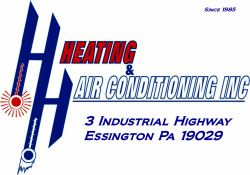A Complete Guide to fighting Indoor Allergies
Your indoor environment could be the source of an abundance of allergy and asthma triggers, according to the EPA. Do you know what dangers are lurking in your home – and how to reduce your exposure? Knowledge is key to successful asthma and allergy management.
What are Indoor Allergies?
Extremely common, allergies effect an estimated 50 million Americans. And indoor allergies can be hard to pinpoint, because symptoms are often confused with the common cold. Drippy nose, itchy eyes, congestion and wheezing with symptoms that linger for weeks on end are prime indicators. What differentiates this from a cold? Fever, chills, body aches, and yellow/green nasal discharge that clears after a week or two.
What are the Most Common Indoor Allergens?
- Dust Mites
A common trigger of allergy and asthma symptoms, dust mites are everywhere, consuming human skin flakes and thriving in warm, humid environments like bedding, upholstery and carpeting. Their body remnants and droppings cause a great deal of allergy woes. - Cockroaches
Roaches can be found anywhere, and are a big problem in inner-city environments – even in homes that aren’t dirty. The protein in their droppings is a common allergen. - Pollen
A variety of pollen can easily be carried into your home on shoes, clothing, and animals. Plants in the home can also produce pollen allergens. - Mold
Mold thrives in damp areas (bath, basement, kitchen, laundry). Mold releases tiny, allergen-inducing spores, and in some varieties, potent mycotoxins capable of causing severe reactions/sickness in sensitive individuals. - Pets
Because people are allergic to saliva, dander (dead skin flakes) and urine, there are no truly “hypoallergenic” breeds.
How Can I Reduce Indoor Allergies?
Avoiding allergens – or reducing exposure – is the most effective remedy.
- General Cleaning
- Where a dust mask when you clean.
- Opt for hard flooring and non-porous, easily washable surfaces, like leather.
- Dust, and vacuum often with a HEPA filter.
- Address water/moisture issues promptly (mold, mites, roaches).
- Use your air conditioner to keep humidity low to guard against mold and dust mites. Dehumidifiers and exhaust fans are also helpful.
- Change allergy-laden filters often.
- Talk to your HVAC pro about upgrading to a high efficiency disposable pleated filter with a MERV 8-12, and system compatibility.
- Clean and disinfect bathrooms, kitchens and basements regularly.
- Don’t neglect carpet and upholstery. If it can’t be laundered, clean it with products that deactivate/denature dust mites/dander.
- Allergen Specific
- Dust Mites
Use allergen-proof fabric covers on mattresses, pillows and box springs. Wash bedding weekly in hot water (130° F) and dry on high heat. Place stuffed animals and a freezer bag, and freeze for 2-4 hours weekly. - Cockroaches
Clean countertop crumbs and dishes regularly, empty the trash, and store food in tightly sealed, hard-sided containers. Contact pest management ASAP for infestations. - Pollen
Leave shoes outside. Shed outerwear, before entry, for the wash. Shower if symptoms persist. Enjoy plants outdoors – leaving them out of the house if allergic. - Mold
Properly ventilate moisture-prone areas via window or exhaust fan, employing a dehumidifier when necessary. Mold loves carpeting – avoid it in these areas. - Pets
Wash hands after petting. Keep pets out of the bedroom, other areas where you spend a lot of time, and keep them outdoors when possible. Ask a non-allergic family member to clean pets weekly, as well as their habitats/belongings.
- Dust Mites
Do Air Purifiers Really Work for Allergies?
Air purifiers with HEPA filtration with MERV ratings of 17-19 are capable of trapping and removing 99.97-99.999% of particles 0.3 micron and larger from the air, including dust, mold, pollen, viruses, bacteria, and odors. UV light versions further reduce the likelihood of air pollutants, killing bacteria, germs and mold. To ensure a reduction of asthma and allergy symptoms, look for true HEPA filters and systems, not those labeled “HEPA-type” which don’t meet stringent standards. As with all air filters, changing them as recommended is key to preventing the redistribution of allergens throughout the home. Be aware, HEPA filters are not designed to work with residential HVAC systems without modification, and could result in system damage. Before installing a filter with a rating higher than MERV 8, consult your friendly neighborhood air conditioning technician.
Itching to improve the indoor air quality in your home? H&H Heating & Air Conditioning can help. Learn more about indoor air quality systems available from H&H today.
This blog was originally posted at https://www.delcohvac.com/complete-indoor-allergy-guide/.



